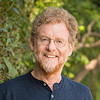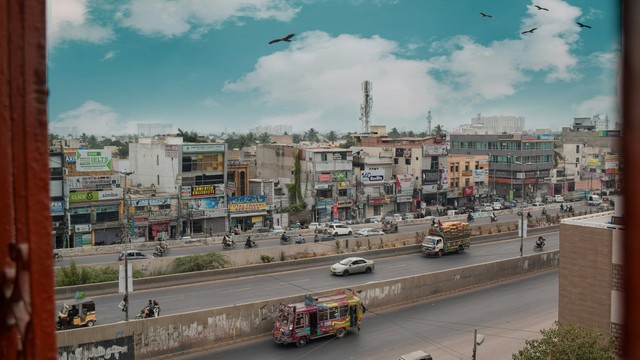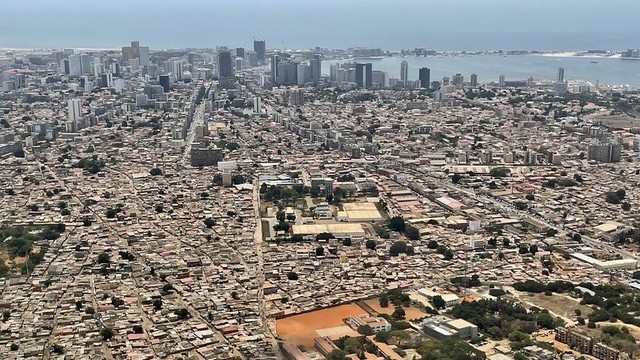Broadening the understanding and measurement of urban poverty
With the pandemic shining a spotlight on inequality and deprivation in cities across the global North and South, now is the time to try and understand what actually constitutes urban poverty so that funding and public services can reach those who need it most.



Urban poverty is not only measured through income, access to public services like connection to piped water supplies and sewers also matter (Photo: Enno Schröder via Flickr, CC BY 2.0)
Poverty lines, used to define who is ‘poor’ and thus is in need, are already set too low in relation to the cost of food and non-food needs in most urban areas. As a result, the scale of urban poverty is vastly underestimated.
Not only is income insufficient to purchase necessities, but income may also be insecure as many work in the informal economy.
Defining poverty solely based on income (even if food and non-food costs are accurately included) misses many of the deprivations that are part of poverty and consequently the touch points for addressing them.
Urban poverty is very often exacerbated by the exploitative and antagonistic relations many government agencies have with disadvantaged groups, so urban poverty reduction often goes hand in hand with improved relations.
Furthermore, reducing poverty is meant to be at the centre of what aid agencies and development banks do. So why is so little funding directed to informal settlements where most urban poverty is concentrated?
Who is low-income?
We have a paradox to confront. On the one hand, there is widespread recognition in city and community studies of the very large scale of urban poverty and that it includes many deprivations. This is shown in this diagram available for download (PDF) or on IIED's Flickr channel, the factors for which can be grouped into the following headings:

- Limited or no safety net
- Poor quality and often insecure, hazardous and overcrowded housing
- Inadequate provision for infrastructure and services (including water and sanitation) causing very large health burden
- Poorer groups’ voicelessness and powerlessness within political systems and bureaucratic structures
- Inadequate protection of poorer groups’ rights through the operation of the law (including protection from discrimination)
- Inadequate, unstable or risky asset base
- High prices paid for many necessities, and
- Inadequate income.
So poverty may be exacerbated by the denial of rights, coupled with limited access to essential public services, which leads to the suppression of low-income groups’ agency.
On the other hand, there are measurements of poverty that focus only on income. This includes measurements that set global poverty lines on the assumption that the income needed to avoid poverty was the same everywhere, both within and between nations.
Both global and national figures often suggest much lower levels of urban poverty than local assessments.
A wider understanding of urban poverty
Poverty lines were initially developed to guide programmes to reduce it. They were based on the income required to meet food and non-food needs. And they guided programmes that sought to provide additional income to those below the poverty line or to find ways to lower their costs (for instance through social housing provision).
But poverty lines do not help us understand urban poverty. Living at high residential densities in informal settlements is particularly difficult because there are limited public services. And those services that do exist are often poor quality. Looked at another way, the cost of acquiring essential non-food goods and services depends heavily on what is provided by way of public services.
The diagram (see above) shows the many deprivations that contribute to poverty, in addition to insufficient income. These include inadequate or no access to public services (such as piped water and sanitary toilets in the home, health care, schools, emergency services, and policing).
It’s not all about income
Income undoubtedly matters, as low-income households do not have enough money to secure the basic goods and services that others take for granted. Informal or insecure work means inadequate and often insecure incomes.
But access to public services also matters.
An estimated one billion people live in informal settlements in urban areas in the global South. Most lack not only infrastructure and services, but importantly a recognised home address along with official identity documents confirming its location and their right to live there. To have no such documentary proof may mean being denied connection to piped water supplies and sewers, or to services such as household waste collection, or policing, or even access to schools and health care.
It often prevents the opening of a bank account, obtaining insurance or inclusion on the register of voters. A legal address can also provide some protection against homes being bulldozed or, at least of being given notice, support in finding alternative accommodation and a hope of receiving some compensation.
And a place to call home matters. Whether or not an individual or household is ‘living in poverty’ is also related to housing that they can afford, or can’t afford. Low-income groups have to rely on cheap accommodation, such as whole households renting one small room, single people using dormitories and ‘hot beds’.
They often struggle to afford the rent, which takes a high proportion of their income. They may be dependent on their landlord for access to water and sanitation, and electricity.
Cost of ‘public’ services
Then there are the (usually high) costs of ‘public’ services, whether or not provided by the government, to factor in. These can include water vendors, pit latrine emptiers, informal schools, health care services, and often electricity providers and informal policing.
Informal settlement dwellers may have no alternative but to access these through private enterprises and this can account for another significant chunk of their income. Many of the lowest-income households cannot afford these, and the rates charged don’t take into account their needs or ability to pay.
Addressing non-income aspects of poverty
The many aspects of poverty and their immediate causes listed (see diagram above) also means that there are many entry points to reduce poverty. Addressing non-income aspects can provide a ‘hidden income’ as outgoings can be reduced directly (for example, cheaper safer water) or indirectly (for instance through reducing health burdens or income lost to injury, illness and premature death).
A broader definition can also draw in other public agencies which could take the priorities of low-income groups into account.
Lack of data
But there is also an astonishing lack of data about informal settlements – their scale, boundaries, populations, buildings, enterprises and the quality and extent of infrastructure and services.
Consequently, the needs of their inhabitants are often ignored. It also means that their contribution to the urban economy (and to the services enjoyed by higher-income groups) is overlooked or greatly understated.
This lack of data and how it invisibilises informal settlements and cities was the focus of a previous blog in this series.
Urban poverty in the global South: scale and nature, by Diana Mitlin and David Satterthwaite, available to purchase from Routledge, 368 pages, hardback (ISBN: 9780415624671).



